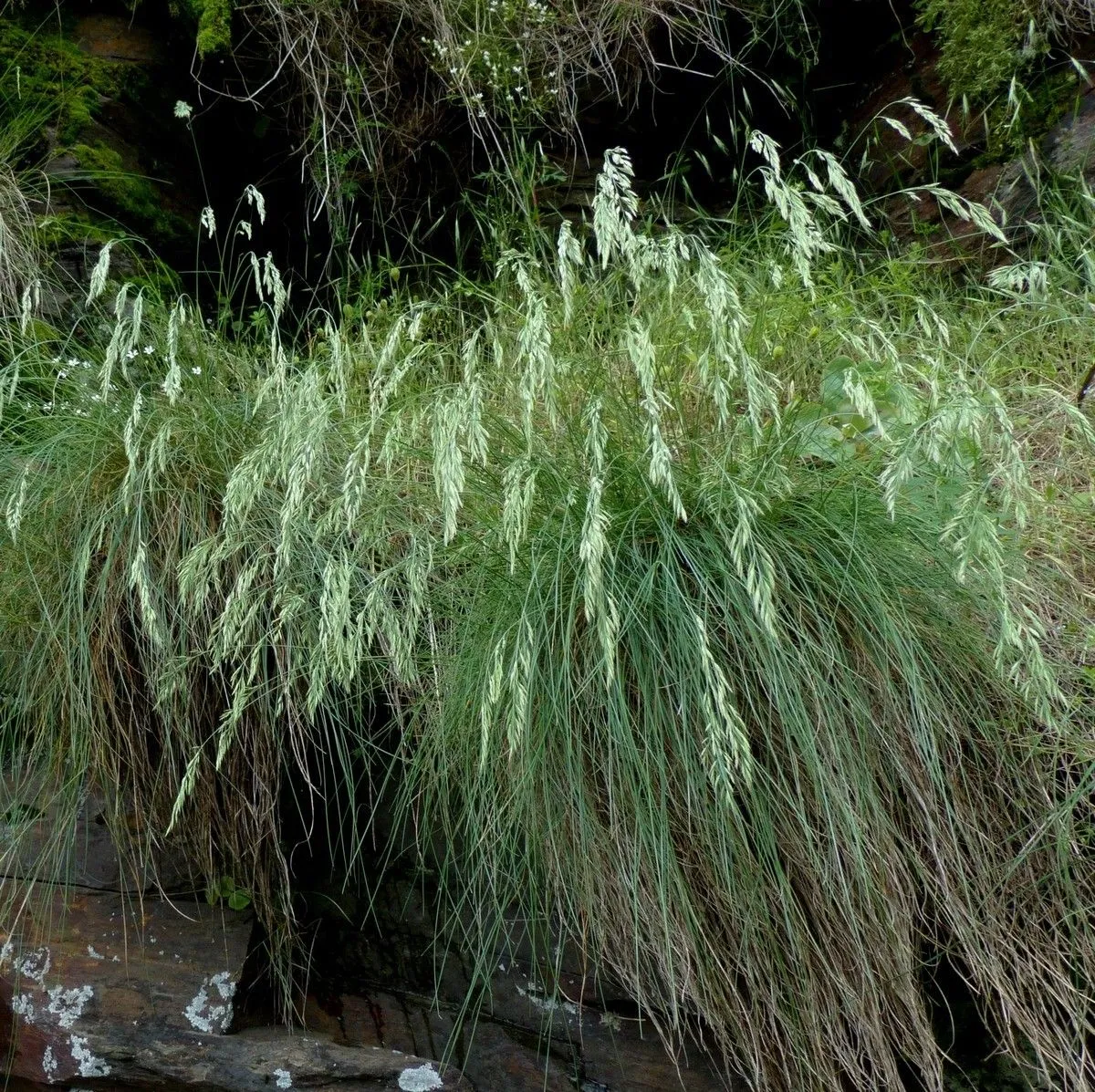
Author: Auquier, Kerguélen & Markgr.-Dann.
Bibliography: Lejeunia, n.s., 89: 15 (1977)
Year: 1977
Status: accepted
Rank: species
Genus: Festuca
Vegetable: False
Observations: Mts. of SC. & SW. France
Field fescue, a perennial grass known scientifically as Festuca arvernensis, is a notable plant within the Poaceae family. First detailed in the publication “Lejeunia” in 1977 by botanists Auquier, Kerguélen, and Markgraf-Dannenberg, this grass holds a specific ecological niche in the mountainous regions of south-central and southwestern France. The grass thrives in these diverse montane environments, where it contributes to the biodiversity and stability of the local ecosystems.
Field fescue is distinguished by its adaptability to the specific climatic and soil conditions found in its natural habitat. Typically forming dense tufts, this grass can withstand the cooler temperatures and varied moisture levels typical of mountainous terrains. Its robust root system helps to prevent soil erosion, playing a crucial role in maintaining the integrity of these delicate ecosystems.
This species is a vital component of the grassy meadows and open woodlands in its native range. It’s often found coexisting with other native flora, creating a rich tapestry of plant life that supports a variety of wildlife. Its presence supports local fauna, providing food and habitat, and contributes to the overall health and resilience of the vegetation communities in which it resides.
In terms of morphology, Festuca arvernensis exhibits the characteristic narrow leaves and fine texture common to other fescue species. It produces inflorescences in the form of slender, nodding panicles, which release seeds that contribute to its propagation and distribution within suitable habitats.
Ongoing studies document the plant’s responses to environmental changes and its role in traditional and current land management practices. Conservation efforts are important to ensure that this species, along with its associated ecosystems, continue to flourish in an age of rapid environmental change.
Field fescue remains a subject of interest not only for its ecological significance but also for its potential use in habitat restoration projects, given its resilience and adaptability to challenging environmental conditions.
Eng: field fescue
En: Field fescue
Ca: Festuca arvèrnica
Fr: Fétuque d’Auvergne
Taken Jun 11, 2019 by Tela Botanica − Jean-Claude Bouzat (cc-by-sa)
Taken Jun 7, 2010 by Tela Botanica − Marc Chouillou (cc-by-sa)
Taken Jun 7, 2010 by Tela Botanica − Marc Chouillou (cc-by-sa)
Taken Apr 28, 2018 by Tela Botanica − Michel PANSIOT (cc-by-sa)
Taken Apr 18, 2014 by Tela Botanica − Jean-Jacques HOUDRÉ (cc-by-sa)
© copyright of the Board of Trustees of the Royal Botanic Gardens, Kew.
Taken Jun 6, 2022 by Alain Lagrave (cc-by-sa)
Taken May 13, 2022 by Anaïs Perchaud (cc-by-sa)
Taken Apr 18, 2014 by Tela Botanica − Jean-Jacques HOUDRÉ (cc-by-sa)
Taken Apr 28, 2018 by Tela Botanica − Michel PANSIOT (cc-by-sa)
Taken Nov 4, 2022 by Roy Eliab Mamani (cc-by-sa)
Taken Nov 4, 2022 by Roy Eliab Mamani (cc-by-sa)
Taken Aug 15, 2018 by Photoflora – Benoit BOCK (©)
Taken Aug 15, 2018 by Photoflora – Benoit BOCK (©)
Growth habit>: Graminoid
Ph maximum: 7.0
Ph minimum: 6.5
Light: 7
Atmospheric humidity: 7
Soil nutriments: 5
Soil salinity: 6
Family: Myrtaceae Author: (F.Muell.) K.D.Hill & L.A.S.Johnson Bibliography: Telopea 6: 402 (1995) Year: 1995 Status:…
Family: Rubiaceae Author: Pierre ex A.Froehner Bibliography: Notizbl. Bot. Gart. Berlin-Dahlem 1: 237 (1897) Year:…
Family: Sapindaceae Author: Koidz. Bibliography: J. Coll. Sci. Imp. Univ. Tokyo 32(1): 38 (1911) Year:…
Family: Asteraceae Author: A.Gray Bibliography: Pacif. Railr. Rep.: 107 (1857) Year: 1857 Status: accepted Rank:…
Family: Fabaceae Author: Medik. Bibliography: Vorles. Churpfälz. Phys.-Ökon. Ges. 2: 398 (1787) Year: 1787 Status:…
Family: Aspleniaceae Author: (Cav.) Alston Bibliography: Bull. Misc. Inform. Kew 1932: 309 (1932) Year: 1932…